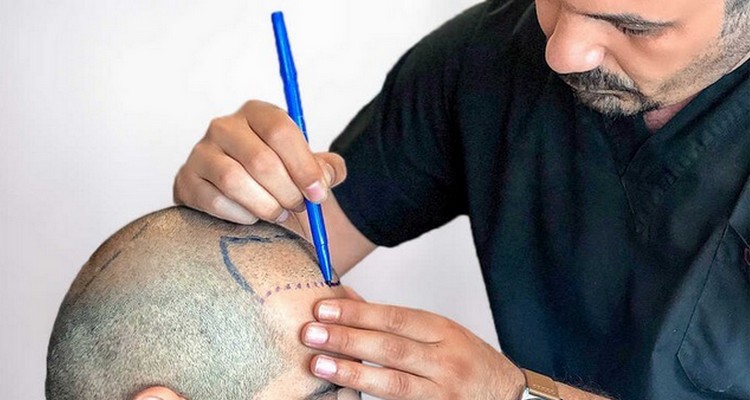Hair restoration is evolving beyond traditional scalp-to-scalp transplants. Many people in Dubai now explore Body Hair transplants as an effective solution for hair loss, especially when scalp donor hair is limited. This technique involves extracting hair from various parts of the body and implanting it into thinning or bald areas of the scalp.
If you’re curious about how the process works, here’s a clear, step-by-step look at how Body Hair Transplant in Dubai is performed. Whether you're struggling with advanced hair loss or simply researching your options, understanding each stage can help you make an informed decision.
What Is a Body Hair Transplant?
A body hair transplant (BHT) is a type of follicular unit extraction (FUE) procedure where hair follicles are harvested from body areas such as the chest, beard, back, arms, or legs and then transplanted into the scalp. This is especially useful for individuals who have insufficient donor hair on their heads.
People seeking Body Hair transplants often turn to this advanced technique to achieve fuller coverage and restore confidence. The procedure requires artistic skill and technical precision to match the transplanted hair to your natural growth pattern.
Step by Step: How Body Hair Transplant Is Performed
Let’s break down the process into simple, understandable stages.
1. Consultation and Evaluation
Every successful Body Hair Transplant begins with a detailed consultation. During this session, the specialist:
- Examines your scalp and body hair characteristics.
- Discusses your medical history and any underlying conditions.
- Identifies suitable donor areas (e.g., chest, beard).
- Estimates the number of grafts required for optimal coverage.
- Sets realistic expectations about density, texture, and growth patterns.
A personalized treatment plan is then designed to ensure natural-looking outcomes.
2. Designing the Hairline and Marking Donor Areas
Once you’re cleared for the procedure, the doctor will:
- Draw your new hairline to complement your facial features.
- Mark the body areas selected for harvesting hair follicles.
This planning stage ensures that the final result will blend seamlessly with your existing hair.
3. Preparing for the Procedure
Before the extraction:
- The donor areas on your body are trimmed to about 1-2 mm in length to allow precise extraction.
- Local anesthesia is administered to numb both the donor and recipient sites, ensuring a comfortable experience.
4. Extracting Body Hair Follicles
Using specialized FUE equipment:
- Individual hair follicles are carefully extracted from the body donor sites.
- A tiny punch tool (usually 0.8-1 mm) is used to minimize scarring.
Because body hair characteristics vary—some curlier or thinner than scalp hair—selecting the right follicles and handling them delicately is crucial for success.
5. Preparing and Sorting Grafts
After extraction:
- The grafts are examined under high-powered microscopes.
- They are sorted by quality and size to ensure only healthy follicles are transplanted.
This meticulous preparation improves graft survival rates and helps achieve a natural look.
6. Creating Recipient Sites on the Scalp
Next, attention shifts to the balding or thinning areas:
- Tiny incisions are made in the scalp following the natural direction and angle of your existing hair growth.
- The density and pattern are carefully designed to avoid an artificial or “pluggy” appearance.
This step requires artistry to mimic nature.
7. Implanting the Body Hair Grafts
Finally, the prepared body hair grafts are gently implanted into the recipient sites:
- Each follicle is placed with precision to align with the scalp’s natural hair direction.
- Care is taken to mix body and scalp hair strategically if combined, maintaining uniformity.
8. Post-Procedure Care and Recovery
After the transplant:
- The treated areas may appear slightly red or swollen for a few days.
- Patients are typically given detailed instructions on washing, protecting the grafts, and avoiding strenuous activities.
Transplanted hair usually sheds within 2-4 weeks—a normal part of the process—before regrowing permanently over several months.
Benefits of Body Hair Transplant in Dubai
Many people in Dubai opt for body hair transplants for unique advantages, such as:
- Expanded donor options: Ideal when scalp donor supply is insufficient.
- Increased coverage: Helps achieve desired density even in extensive hair loss cases.
- Customized solutions: Hair can be selected from areas with the best match for texture and thickness.
Moreover, the advanced facilities and experienced specialists in Dubai make this technique a sought-after choice for restoring hair naturally and effectively.
Who Is a Good Candidate for Body Hair Transplant?
This procedure may be suitable for you if:
- You have advanced hair loss with limited scalp donor hair.
- You possess healthy, dense hair on your beard, chest, or other body areas.
- You seek to improve overall hair density or repair previous transplants.
An expert evaluation is key to determining suitability, as body hair may have different growth cycles and characteristics that impact final results.
Helpful Aftercare Tips
To protect your investment and encourage strong growth:
- Avoid direct sun exposure and heavy sweating for the first few weeks.
- Follow recommended washing techniques and avoid scratching the scalp.
- Stay hydrated and maintain a balanced diet to support hair health.
Regular follow-ups help monitor progress and address any concerns early.
Final Thoughts
A Body Hair Transplant offers a promising option for those facing extensive hair loss or depleted scalp donor supply. With advanced techniques and careful planning, hair from your chest, beard, or other areas can be used to create a fuller, natural-looking head of hair.





Comments